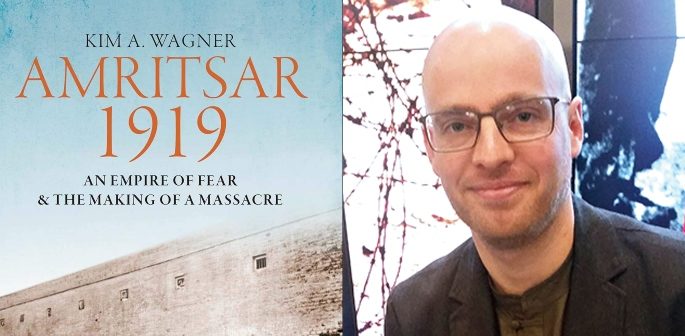The troop rained bullets down on the unsuspecting civilians
Kim A. Wagner is a British-Danish historian specialising in colonial India and the British Empire at Queen Mary, University of London.
A renowned professor and author, Wagner has written many books on India.
His first literary endeavour was Thuggee: Banditry and the British in early nineteenth-century India (2007).
Followed by a book on the Indian Rebellion of 1857, named The Skull of Alum Bheg: The Life and Death of a Rebel of 1857 (2014).
Wagner’s latest book is Amritsar 1919: An Empire of Fear and the Making of a Massacre (2019).
Amritsar 1919 discusses how the Jallianwalla Bagh Massacre was a result of a British fear of another Indian rebellion after 1857.
On December 31, 2020, Wagner announced his tentative plans of signing a film contract on his book Amritsar 1919.
Not too much to celebrate, but the contract for the film-option for 'Amritsar 1919' has now been signed. It's still a long-shot, but here's to hoping… pic.twitter.com/McGxawuDMm
— Kim A. Wagner (@KimAtiWagner) December 31, 2020
Wagner’s book is a meticulously researched dramatic account from the perspective of ordinary people present on all sides of the infamous incident.
A seminal and misunderstood moment in the history of the British Empire, the Jallianwalla Bagh Massacre of 1919 was a horrifying incident.
379 Indians were shot dead or trampled, with 1200 more injured at the orders of General Dyer of the British Empire.
The incident took place on April 13, 1919, while India was still ruled by the British Empire.
On the day of the Jallianwalla Bagh Massacre, Acting Brigadier-General Reginald Dyer had been convinced a major insurrection could take place and had banned all meetings.
This notice was not widely disseminated, and many villagers gathered in the Bagh to celebrate the important Indian festival of Baisakhi.
The villagers also gathered to peacefully protest the arrest and deportation of two Indian national leaders, Satyapal and Saifuddin Kitchlew.
Dyer and his troops had reportedly entered the garden, blocked the main entrance behind them and taken up position on a raised bank.
Dyer proceeded to order his troops to open fire into a crowd of unarmed Indian civilians with no warning.
The troop rained bullets down on the unsuspecting civilians as people tried to flee until their ammunition supply was exhausted.
Wagner’s book Amritsar 1919 contextualises the massacre aided by meticulously researched work.
The book focuses on the days and incidents leading up to the Jallianwalla Bagh Massacre.
In his work, Wagner wished to capture the intention of British and Indian mindsets that led to ‘disturbances in Punjab’ and the ensuing slaughter.
A follow-up of his previous book on the 1857 Indian Revolt, Wagner portrays how the ‘Sepoy Mutiny’ was lodged in the British colonial imagination in 1919.
The writer narrates that a combination of racism and mutiny paranoia, coupled with miscommunication contributed to heightened British anxiety towards Indians.
Wagner compiled photos, diary records and detailed reports of the incidents leading up to the day of the Jallianwalla Bagh incident.
Now Wagner’s work will be remade into a film, recreating one of the most controversial events in the history of the British Empire.





























































